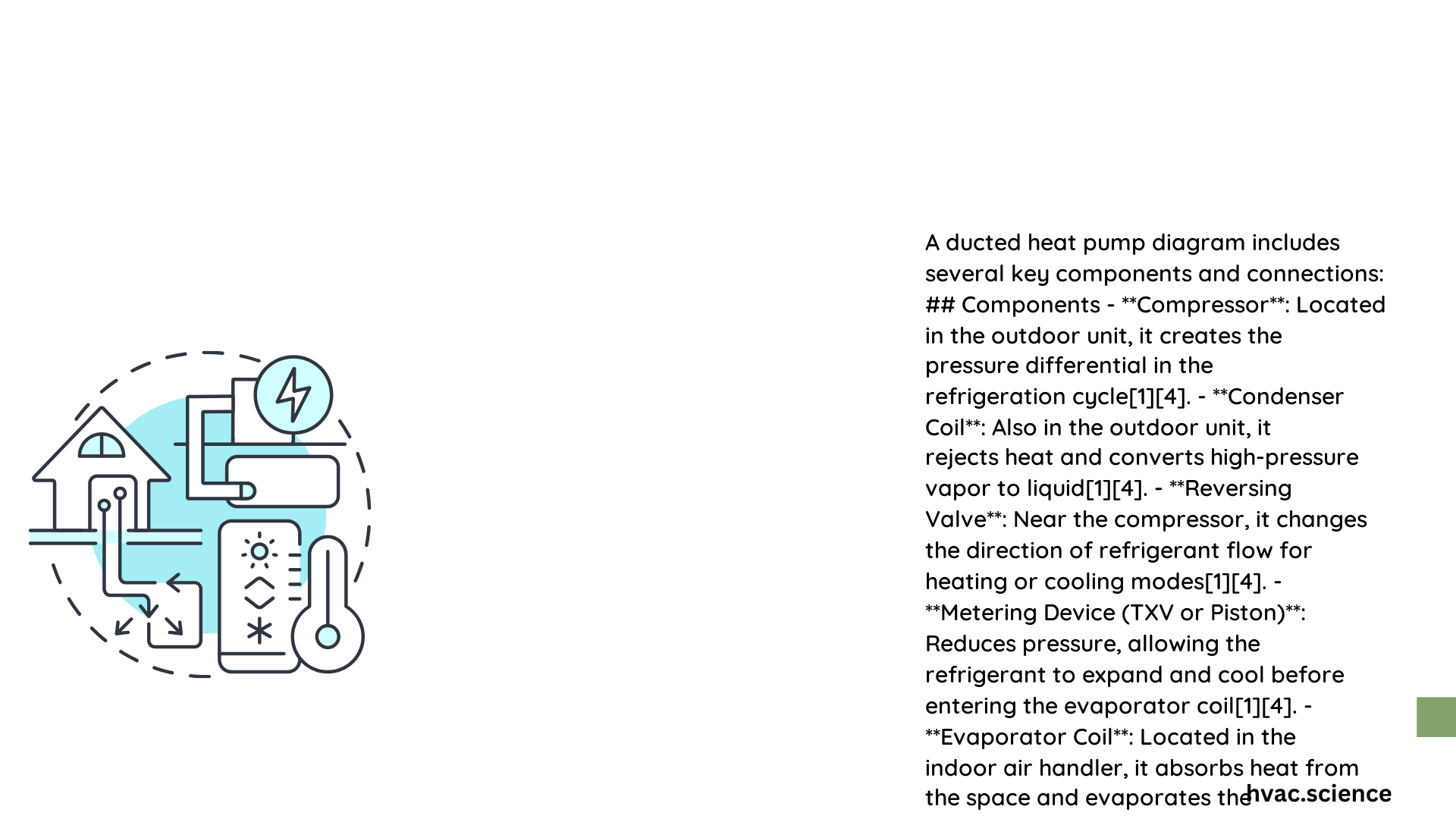A ducted heat pump diagram reveals the intricate network of components that enable efficient temperature control in residential and commercial spaces. This sophisticated system transforms ambient heat energy through strategic refrigerant circulation, utilizing outdoor and indoor units connected by specialized ductwork to deliver precise thermal management across multiple zones.
What Are the Primary Components of a Ducted Heat Pump?
Key System Elements
| Component | Function | Location |
|---|---|---|
| Compressor | Pressurizes refrigerant | Outdoor Unit |
| Evaporator Coil | Absorbs/Releases Heat | Indoor/Outdoor Units |
| Condenser Coil | Transfers Thermal Energy | Indoor/Outdoor Units |
| Ductwork | Air Distribution Network | Throughout Building |
How Does Refrigerant Flow Work?
The refrigerant undergoes a fascinating thermodynamic cycle:
- Compression Stage
- Refrigerant enters compressor
- Pressure and temperature increase dramatically
-
Transforms from low-pressure gas to high-pressure, high-temperature gas
-
Heat Exchange Process
- Moves through condenser coils
- Releases or absorbs thermal energy
- Changes physical state between liquid and gaseous forms
What Makes Ducted Heat Pump Design Unique?
Structural Advantages
- Centralized air distribution
- Flexible zone control
- Seamless integration with existing ductwork
- Minimal visual intrusion
- Energy-efficient operation
How Are Ducts Properly Sized?
Duct sizing depends on multiple factors:
- Room square footage
- Ceiling height
- Insulation quality
- Desired airflow rate
- System capacity
Calculation Method:
CFM (Cubic Feet per Minute) = Room Area × Desired Air Changes per Hour ÷ 60
What Installation Considerations Exist?
Critical Placement Factors
- Outdoor unit requires:
- Level surface
- Adequate clearance
- Protection from direct sunlight
-
Minimal wind interference
-
Indoor unit needs:
- Central location
- Accessible maintenance area
- Proper electrical connections
- Structural support
How Can Efficiency Be Maximized?
Performance Optimization Strategies:
– Regular filter replacement
– Annual professional maintenance
– Proper insulation
– Smart thermostat integration
– Balanced airflow design
What Maintenance Practices Ensure Longevity?
Recommended Maintenance Schedule
| Interval | Action | Purpose |
|---|---|---|
| Monthly | Filter Inspection | Airflow Quality |
| Quarterly | Coil Cleaning | Heat Transfer Efficiency |
| Annually | Professional Inspection | System Performance |
Technical Specifications
- Average Lifespan: 10-15 years
- Efficiency Range: 300-500%
- Temperature Operational Range: -15°C to 40°C
Cost Considerations
- Installation: $6,000 – $20,000
- Annual Operating Cost: $500 – $1,500
- Energy Savings: 30-50% compared to traditional systems
Conclusion

A comprehensive ducted heat pump diagram reveals a complex yet elegant solution for modern thermal management, balancing technological sophistication with practical energy efficiency.
